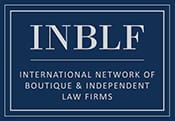Food’s Identity Crises, Part II: Standard Stuff Gets Reconsidered
By Eric F. Greenberg, Attorney-at-law
October 2019
Last month, we explored the way the increasingly innovative world of new foods presents challenges to regulators, what with non-meat-containing meat substitutes and food proteins from sources like insects, and discussed the controversies over how to name the foods. Well, there’s another big crisis for foods’ identity, and it is due to the existence of a set of old regulations called “standards of identity.” (Standards of identity are not to be confused with a food’s “statement of identity,” its generic description, which is one of the key mandatory elements of every retail food label.)
By the time you read this, FDA will have held its most recent public meeting in late September to hear from folks how best to approach the question of what to do about food standards of identity, which seem increasingly ill-suited to the innovative world of food packagers. FDA had already held such a meeting in July of 2018. The agency has already said it hopes to make changes to standards that are “horizontal,” mean ing that they are made “across categories of standardized foods,” sort of a wholesale approach that would establish new principles or concepts that could be applied to multiple food standards at once.
The agency’s goal is to make sure its rules allow food makers sufficient flexibility and creativity to make healthful and nutritious foods, while still promoting honesty and fair dealing vis a vis consumers.
There are about 280 definitions for individual foods built into FDA regulations called “standards of identity.” They cover a wide range of foods, including cheeses and other dairy products, ice cream and other frozen desserts-from common ones like ice milk to less common ones like ‘mellorine’-and even for a long list of canned vegetables, from artichokes to turnips.
Each of these regulations list the ingredients, and in many cases formulary requirements and prohibited ingredients, all to help assure that consumers get what they expect whenever a packager labels the food with the standardized name.
So, if you want to call your cheese “cheddar cheese,” it has to be made using specified dairy ingredients and “subjected to the action of a lactic acid-producing bacterial culture,” and one of the clotting enzymes listed in the regulation, with the addition of one or more optional ingredients listed, then subjected to other manufacturing steps laid out in the regulation (21 CFR 133.113).
And if you want to call your frozen dessert “ice cream,” it’s gotta be made by “freezing, while stirring a pasteurized mix” of one or more of the optional dairy ingredients listed, plus one or more optional caseinates and other ingredients, and not containing most other food fats, plus safe and suitable sweeteners and flavors, and containing at least 10% milkfat, among other specifications (21 CFR 135.110).
As you have probably guessed by now, it’s a violation of federal law to market a food using the name of a food that has a standard of identity but which doesn’t meet the specs in the standard of identity.
These regulations targeted the kind of flim-flammery that used to be much more common, as some food packagers would put essentially anything in a jar or can and call it something consumers wanted. Often the foods weren’t what they claimed to be, or were reduced-strength versions of the foods. Such “economic adulteration” was, as we say in the law, a rip-off, and standards of identity were aimed at protecting consumers from being cheated.
And yet, as time marched on, it became clearer and clearer that standards of identity had the potential to restrict food packagers and developers from making new and different innovations and variations on traditional foods. For example, you may remember that back in 1980s, emerging nutrition science was increasingly telling consumers that dairy products had many health benefits, but contributed a lot of fat to one’s diet. Innovations like low-fat cheeses and yogurts were developed, but the packagers were restricted from marketing them by the standards of identity that called for specified minimum fat levels.
The 1990 Nutrition Labeling and Education Act went a long way to solving that problem and allowing innovative new foods to enter the market without running afoul of the standards of identity. NLEA was a multifaceted change in food law that provided for the modern Nutrition Facts box, and also added to FDA’s requirements a series of definitions for so-called “nutrient content claims” on labels such as “low,” “reduced,” or “high.”
As part of NLEA, Congress specifically added to the law a provision that said a food would not be considered violative if its name combined the name of a standardized food with a defined nutrient content claim term like “fat free,” “low fat,” or “reduced fat,” using those terms as they were now defined. The provision allows those foods that substitute for standardized foods to still use the name if the way in which they don’t match the standard’s requirements is “because of a deviation that is described by an expressed nutrient content claim,” provided it meets certain requirements including that it isn’t nutritionally inferior to the standardized food.
For its September public meeting, FDA said it would focus breakout sessions on three topics: how best to adapt standards to “encourage production of more nutritious foods;” food innovation; and “consumer expectations” regarding standardized foods.
It’s good news that FDA seems poised to expand the horizontal approach. The agency is doing so because that approach will probably be quicker to implement, builds in some flexibility for food makers (and because FDA probably doesn’t have the resources to change the rules food-by-food). For the increasingly creative and innovative food industry, any approach characterized by speed and flexibility would be most welcome. PW
Eric Greenberg can be reached at [email protected]. Or visit his firm’s Web site at www.ericfgreenbergpc.com.
INFORMATIONAL ONLY, NOT LEGAL ADVICE.
This article is informational only and is not intended as, and should not be considered to be, legal advice.
Be sure to check for any updated information about the topics discussed in this article.


